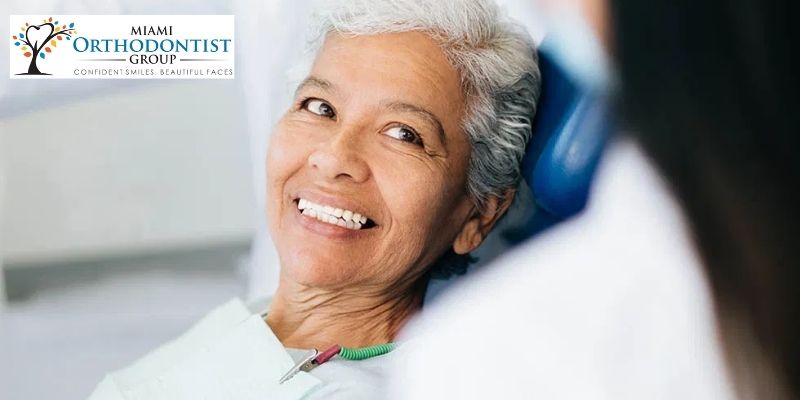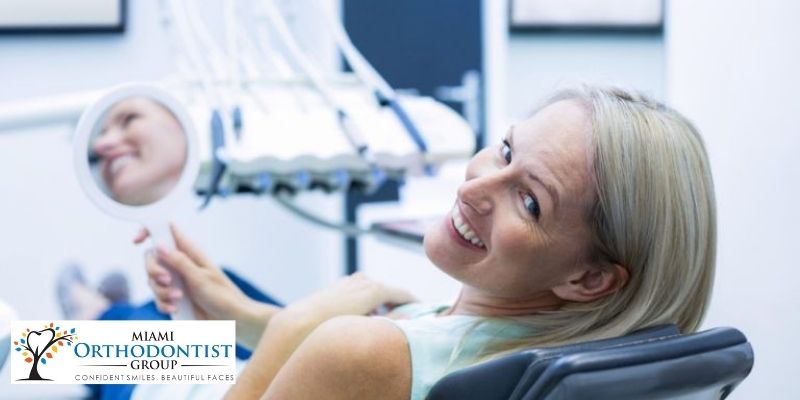Getting older is not what many people love to discuss. However, it is important to know the changes that occur in the body as one gets older. Understanding how your body changes as it ages will help you live a healthy and happy life, as you get older. It is not only our bodies that change as we grow older; our smile also changes.
Aging does not usually happen the way we expect, and it is not pretty for most parts of our body, including our mouth. Data from Hard Health shows that about 75 percent of people over the age of 65 have at least some of their natural teeth. However, they have much higher rates of dental decay, gum disease, tooth loss, mouth infections, and more.
Some of those dental issues or deficiencies are caused by old age, while others are due to wear and tear on the teeth as one grows old. Even when one maintains great dental hygiene and stays away from bad habits such as smoking, gradual changes and natural shifts can still make your smile appear much different as age sets in.
Your once-brilliant smile can change significantly due to pressure placed on certain areas of the mouth repeatedly, loss of bone density, teeth grinding, and more. In this guide, we will be discussing some of the major ways your smile could change as you grow old, and what steps you can take to retain your beautiful and brilliant smile.
Four Ways Your Smile Change As You Grow Old
1. Dry Mouth

Old age comes with many things, and dry mouth is one of them. As one gets older, the glands in the mouth produce saliva less efficiently. Taking a lot of medication, which is common among older people, can cause side effects such as a dry mouth. Lack of saliva hinders swallowing and chewing, causes bad breath, tooth decay, increases the risk of bacterial growth, and the formation of cavities.
A dry mouth also causes the teeth to get worn down and lose shape quickly. One of the best ways to keep your mouth moist is by drinking water regularly. You can also chew on sugar-free gum to stimulate the production of saliva. Alcohol and caffeine reduce the production of saliva, which means you need to cut down their consumption.
Another common cause of this issue is tobacco, and you also need to avoid or stop taking it. You can get some tips from your orthodontist on how to best deal with this issue. Some orthodontic specialists might recommend you OTC saliva, as they are specially designed to solve this issue.
2. Wear And Tear
The human teeth are very strong. The average molar can crush down with a shocking 200 pounds of force, which is about 40x more force than our nearest primate relatives. Nevertheless, despite the enormous chewing force they have, they are still destructible. Over 50 years of gnashing, chewing, and biting can reduce the effectiveness of the protective enamel coating on your teeth. When this happens, your teeth will be vulnerable to breaking and cracking.
As you grow older, nerves in the teeth will start losing sensitivity, so you might not feel mild pains except severe ones. You can do very little to stop the teeth from wearing out naturally due to chewing. Nevertheless, you can prevent other related issues by flossing, rinsing your mouth, and brushing regularly.
If you find it difficult to brush your teeth manually due to arthritis or other similar problems, we recommend that you use an electric toothbrush. Fluoride can also help to rebuild the enamel of your teeth and prevent bacteria from turning the root of your gums or teeth into a breeding place.
3. Teeth Crowding And Shifting Teeth

Teeth crowding can also change your smile as you grow old. Several factors can cause teeth crowding, but one of the major causes is the loss of jawbone density. When you lose a tooth or more, it usually causes the bottom jaw area to shrink. It also causes the squeezing together of the lower teeth. An aging person can also experience teeth crowding due to chronic mouth breathing, enduring facial trauma for long, and abnormal swallowing patterns like reverse swallowing and tongue thrusting.
As you get older, your teeth might start to shift place gradually. This is often a result of the weakening of the lower and upper jaws. When your teeth start shifting, you might need orthodontic treatment or devices such as Invisalign or braces. These are quick and effective fixes for the shifting teeth due to age.
Periodontal disease can also cause shifting teeth, and it can be treated by scraping to get rid of the hardened plaque, antibiotics, and surgery in some cases. Normally, these changes caused by aging occur gradually, and they are not severe, so they do not need invasive treatments or procedures to be corrected.
4. Yellow Teeth
This is one of the most problematic tooth aging side effects for most people. No one wants to see their pearly white teeth turn yellow. Yellowing teeth are partially caused by the yellowing of the dentin inside the teeth, which becomes visible as the enamel wears out.
Yellow teeth are also usually the result of staining by wine, coffee, tobacco, and tea. Consuming these beverages or food items frequently can cause your teeth to change color over time, especially as you grow older. Fortunately, there is a way you can restore your smile, thanks to the numerous whitening options out there. You can use whitening strips or whitening toothpaste to restore the color of your teeth. However, you still need to consult your orthodontist before you pick a bleaching agent. Your dentist is the right person to help you select the best option for you.
Wrapping Up
As you grow older, every part of your body grows along with you, including your mouth and smile. At this stage, your smile will start changing due to several factors. Fortunately, there are several ways through which you can restore your smile, and your orthodontist can help you with that.


